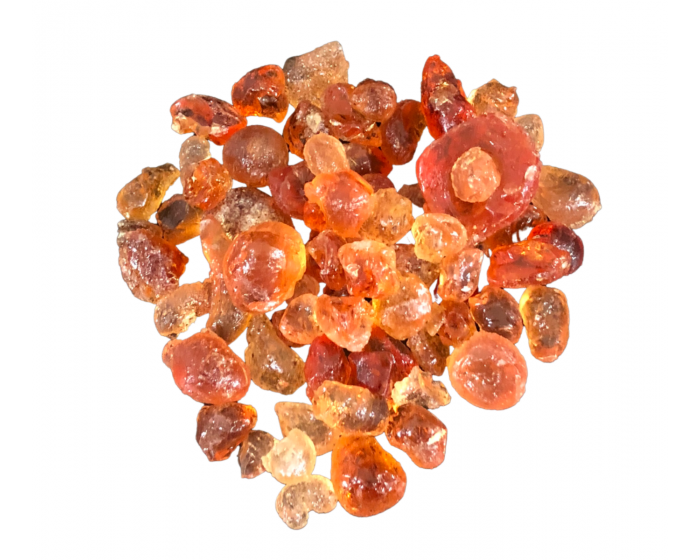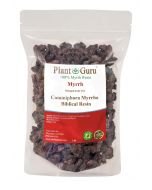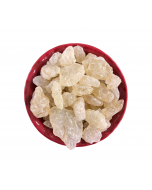Gum Arabic Resin
Product Description: The Acacia tree grows in a region that stretches from Senegal to Sudan in Africa and cultivated in Arabia and West Asia. Gum arabic, a complex mixture of polysaccharides and glycoproteins, is used primarily in the food industry as a stabilizer.
The Senegal gum acacia is an average sized tree with thorns that grows on the African savanna grassland. Gum arabic fiber is widely used in in many industries as an emulsifier and stabilizer. Commonly used as a thickening agent in icing, fillings, chewing gum and other confectionary treats. It is also a very commonly used as a base for burning incense because of its light smell.
Acacia decocotions are reported to significantly potentiate the flavor of other herbs without reacting with them. To prepare the gum, combine one part by weight of Acacia gum with three parts by volume of distilled water. Place into a tightly-closed bottle, shake occasionally, allow to dissolve, and keep refrigerated. Combine this liquid with wines or smoking blends.
On trees of the genus Acacia that exude gums, the harvest is described as follows:
The gum harvest from the various species lasts about five weeks. About the middle of November, after the rainy season, it exudes spontaneously from the trunk and principal branches, but the flow is generally stimulated by incisions in the bark, a thin strip, 2 to 3 feet in length and 1 to 3 inches wide being torn off. In about fifteen days it thickens in the furrow down which it runs, hardening on exposure to the air, usually in the form of round or oval tears, about the size of a pigeon's egg, but sometimes in vermicular forms, white or red, according to whether the species is a white or red gum tree.
About the middle of December, the Moors commence the harvesting. The masses of gum are collected, either while adhering to the bark, or after it falls to the ground, the entire product, often of various species, thus collected, is packed in baskets and very large sacks of tanned leather and brought on camels and bullocks to the centres of accumulation and then to the points of export, chiefly Suakin, Alexandria, or - in Senegambia - St. Louis. It is then known as 'Acacia sorts,' the term being equivalent to 'unassorted Acacia.' The unsorted gums show the widest variation as to size of fragments, whiteness, clearness, freedom from adhering matter, etc. It is next sorted or 'picked' in accordance with these differences.



